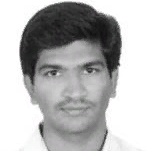
J. Malleswara Rao
Work place: National Remote Sensing Centre, Indian Space Research Organization, Hyderabad, India.
E-mail:
Website:
Research Interests: Pattern Recognition, Image Compression, Image Manipulation, Image and Sound Processing, Data Structures and Algorithms
Biography
J.Malleswara Rao received M.Sc degree in Mathematics from Acharya Nagarjuna University, and M.Tech in spatial information technology in 2009 from JNTUH, Hyderabad, India. He is currently working as a SRF in NRSC and pursuing Ph.D degree in spatial information technology at JNTUH, Hyderabad, India. His research interests include image super resolution, spatiotemporal data fusion, and pattern recognition
Author Articles
Spatiotemporal Data Fusion using Dictionary Learning and Temporal Edge Primitives
By J. Malleswara Rao C. V. Rao A. Senthil Kumar B. Gopala Krishna V. K. Dadhwal
DOI: https://doi.org/10.5815/ijigsp.2015.10.06, Pub. Date: 8 Sep. 2015
Technological limitations restrict to acquire an image at high spatial and high temporal resolutions with space borne global sensors. In this paper, we propose a novel technique to create such images at ground-based data processing system. The Resourcesat-2 is one of the Indian Space Research Organization (ISRO) global missions and it carries Linear Imaging and Self-Scanning Sensors (LISS III and LISS IV) and an Advanced Wide-Field Sensor (AWiFS). The spatial resolution of LISS III is 23.5 m and that of AWiFS is 56 m. The temporal resolution of LISS III is 24 days and that of AWiFS is 5 days. Objective of the paper is to create a synthetic LISS III image at 23.5 m spatial and 5-day temporal resolutions. A synthetic LISS III image at time tk is created from an AWiFS image at time tk and a single AWiFS–LISS III image pair at time t0 which is acquired before or after the prediction time tk , here t0≠tk. The proposed method involves three phases. The first is super resolution phase. In this phase, two transition images are obtained for the time t0 and tk by improving AWiFS spatial resolution. The second is high pass modulation phase. In this phase, the high frequency details which are obtained in the difference of LISS III image and the transition image of time t0 are proportionally injected into the transition image at time tk. In composition of multi-temporal images of different spatial resolutions, spurious spatial discontinuities are inevitable. In the third phase, these spurious discontinuities are identified and smoothed with the spatial-profile-averaging method. The proposed method achieves better prediction accuracy when compared to the state-of-the art techniques.
[...] Read more.Other Articles
Subscribe to receive issue release notifications and newsletters from MECS Press journals